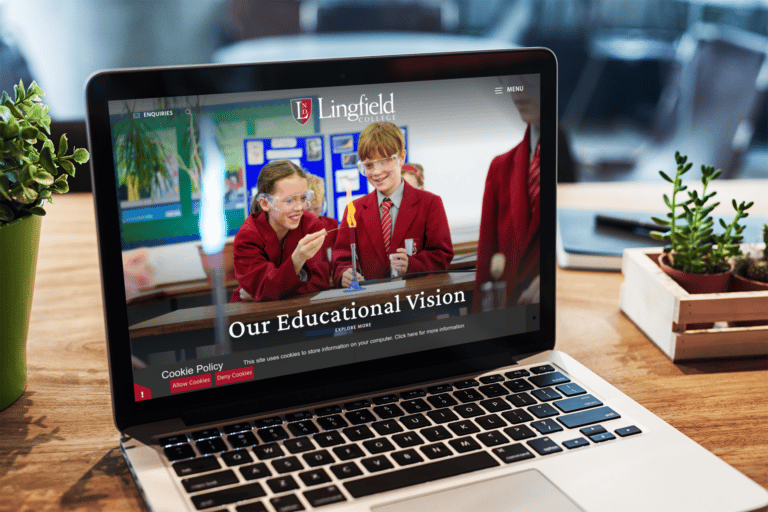Unconscious bias has an impact on every decision we make. So when recruiting school staff, you must understand precisely what unconscious bias is, the effect it has on your workforce and how to ensure it doesn’t seep into your recruitment efforts.
It is well documented that those responsible for hiring make up their mind about an applicant in approximately seven seconds. In this time, they have probably consciously registered the candidate’s appearance, the way they speak and the quality of their handshake, all of which could unconsciously influence their perception and, ultimately, their decision on whether or not to hire them.
What is unconscious bias?
Unconscious or implicit bias is when our ‘brains’ make snap judgements and assessments about people and situations without realising, resulting from our background, cultural environment, and personal experiences.
For example, imagine meeting someone for the first time and making a snap decision that you don’t like them. You can’t quite put your finger on it, but it’s obvious something is putting you off; this is unconscious bias.
Meeting a candidate and making any of the following assumptions are examples of unconscious bias during the recruitment process:
- They look young – they probably won’t have enough experience,
- They have a lazy eye – that might be a problem for computer work,
- They are from a BAME background – no one else in that department is from a BAME background. Will they feel comfortable?
What are the 5 unconscious biases?
There are many types of unconscious bias; however, you should specifically lookout for the following during the recruitment process:
- Affinity bias – favouring candidates who are similar to yourself,
- Ageism or gender bias – expecting the successful applicant to fall under a specific gender or age bracket,
- Confirmation bias – choosing someone who fits into our personal idea of what the successful candidate would be, therefore confirming our pre-set ideas,
- Contrast bias – comparing one candidate to another rather than against the pre-set criteria,
- Name bias – judging an applicant based on their name.

How does unconscious bias affect the workplace?
Unconscious bias reaches further than just recruitment. It can also impact decisions regarding promotions and staff development, whereby the same group of people, such as white males, are given opportunities that others outside this grouping aren’t.
This can lead your school to have a reputation for favouring certain groups over others, which could prevent highly talented individuals from wanting to apply to work at your school.
Not only this, if there is any evidence that a member of staff has been treated differently due to bias of any kind, someone could take discriminatory action against your school. This would ultimately cost your school a lot of money in legal fees and potentially lead to parents choosing not to enrol their children in your school when word gets out.
Perhaps most importantly, unconscious bias can make your workforce feel undervalued and lesser than their colleagues, a feeling that no employee should ever have to suffer.

How can you prevent unconscious bias in recruiting candidates?
By taking the following actions, you can significantly reduce the chances of unconscious bias seeping into your recruitment decisions:
- Involve more than one person in the recruitment process and ensure everybody is basing their decisions on pre-set criteria or a scoring system.
- When shortlisting or conducting interviews, take your time and schedule regular breaks – unconscious bias tends to impact our decision-making when there are time pressures and/or other distractions.
- When shortlisting candidates, do not compare one applicant directly against another; you should be comparing each application against the set criteria of the job description, personal specification, etc.
- Before interviews, develop a structured set of questions and ensure that they are consistently applied to each applicant being interviewed.
- Interviewers can ask supplemental questions during the interview when and if there is a need to gather further information.
- When deciding who to employ, ensure that all decisions are evidence-based and can be supported by factual feedback centred on the individual’s application, performance during the interview process, and against the set criteria.
Simply realising that you may have biases can enable you to monitor and adapt any hidden thoughts and prejudices you may have before they are expressed in any recruitment decisions.
Once we accept that we will naturally use subconscious mental ‘shortcuts’, then we can take the time to consider them and reflect on whether such thought processes are inappropriate and affect any objectivity in our decision-making.
Making decisions about which candidate to hire is complex. It will depend on you judging all candidates fairly and equitably, based entirely on the facts supplied rather than any personal traits.
Remember, if you recruit based on that seven-second ‘gut-feeling’ alone, you’re likely to be hiring based on your unconscious biases.










